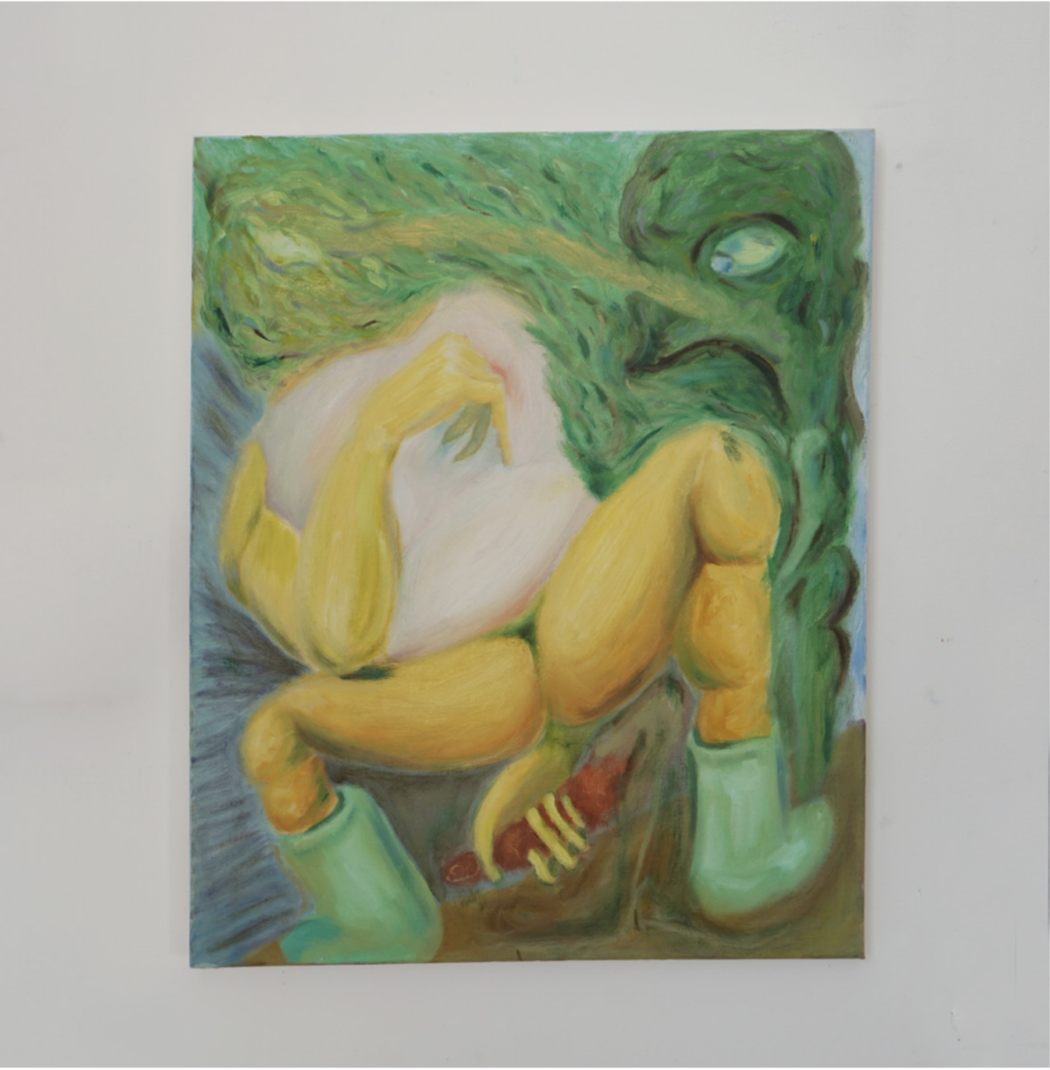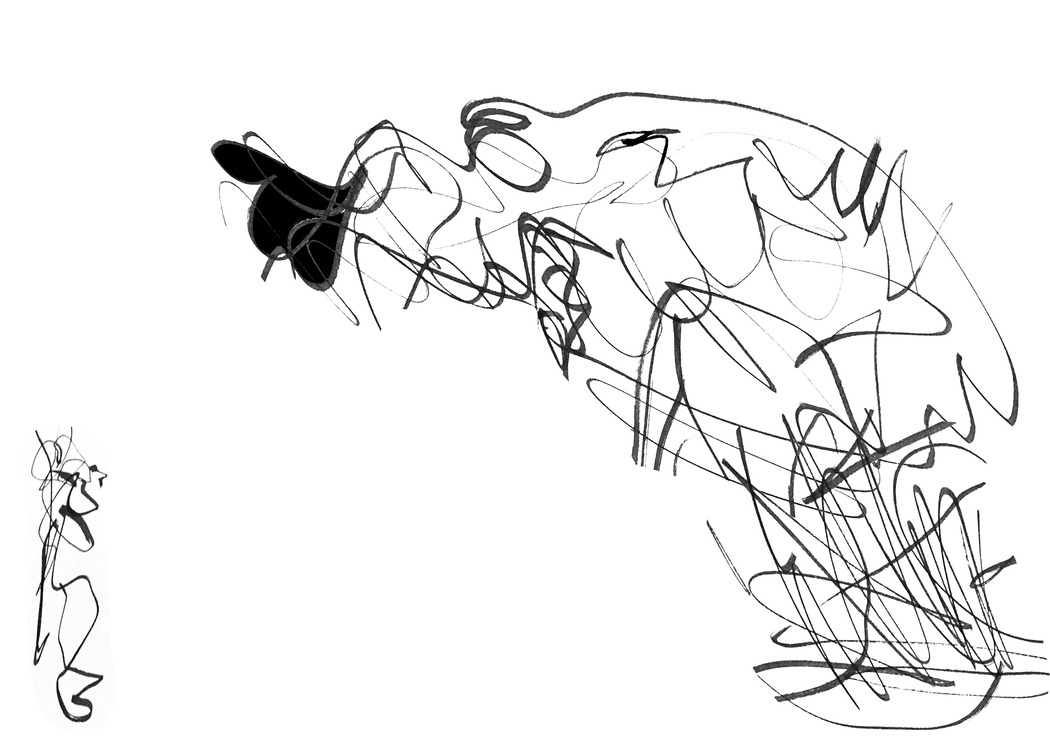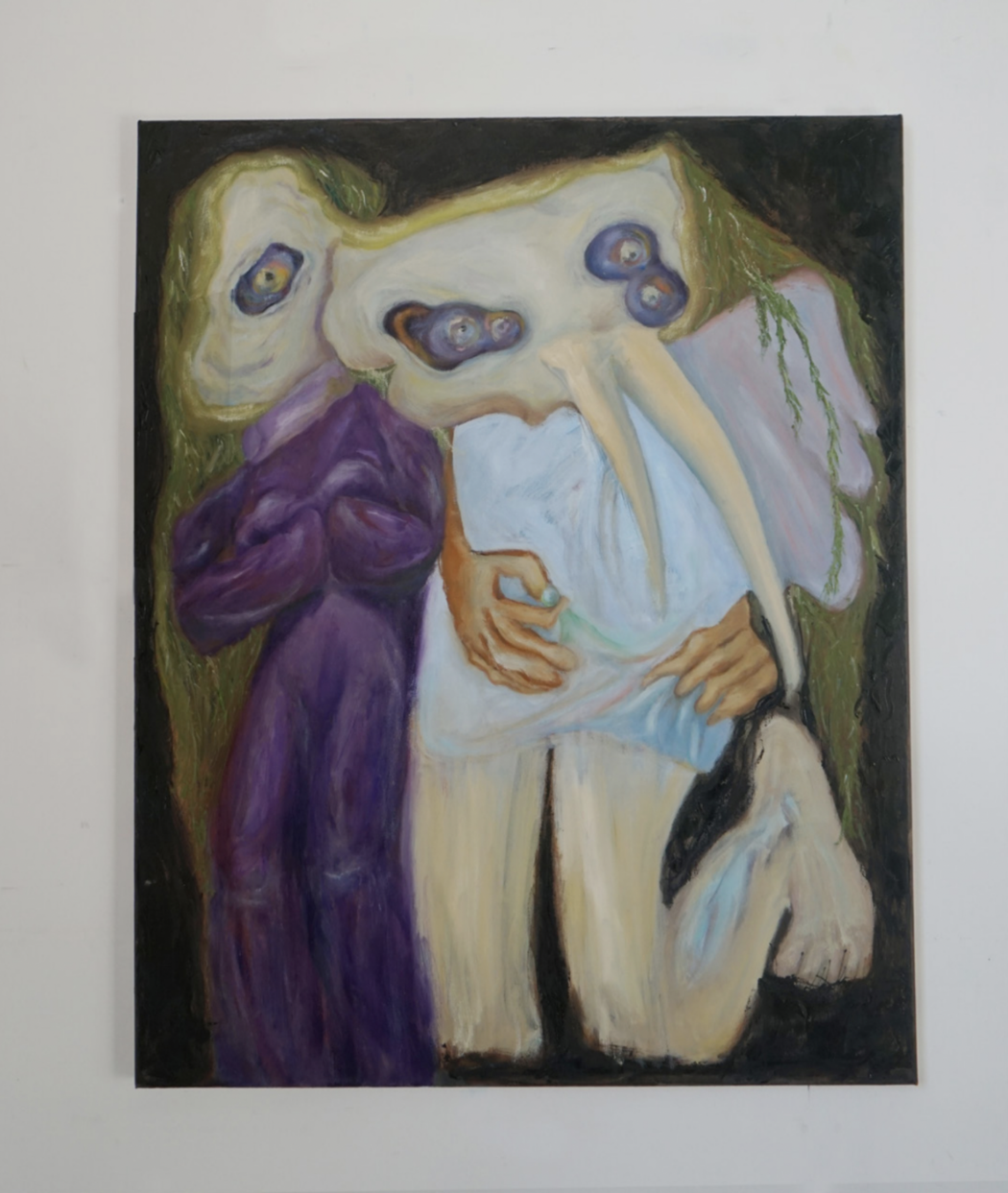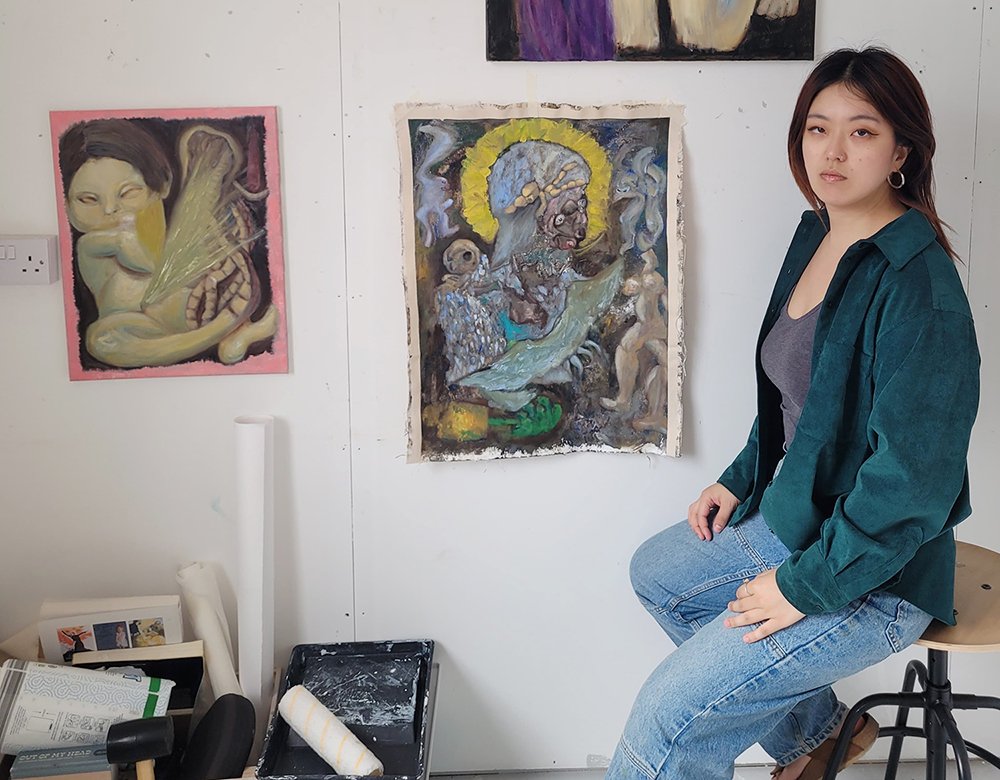Trisha Kim
Your artistic process begins with automatic drawing. Can you describe what this phase feels like mentally or emotionally?
It’s a small protest against the fear of blank canvas. Carefully drawn one line evolves to having rough, confident gestures as a mixture of emotions – confident, frustrated, confused, fun and eventually it mixes with different drawings. I often use an oil stick for oil paintings, but for Night Figures, it was a different experiment of setting limits by using a pen, where I can’t go back and diluted, it’s embracing mistakes and each moment. This disabled ‘undo’ makes me focus more on each second, feeling the tip of the pen.
What draws you to explore relationships between humans and “other intellectual beings” in your art?
Other intellectual beings are an existence that I’d like to introduce in my art because it puts ourselves (human beings) outside of their human-centric view. It doesn’t have to go back to ancient times to find one where a lot of cultures believed their own intellectual beings such as spirits, God, fairy, souls and so on, because now we have this AI that we communicate with everyday as a service assistant or advisor. I observed a wide range of manners, from extremely rude to kind while interacting with AI. This direct and common interaction of the public – beyond abstract and selective communication within rituals or lack of proof of having an intellectual interaction in ancient times – evokes interesting questions to ponder ‘how would humans see themselves when we realise we are not only beings to be ‘intelligent’ and ‘communicable’? Would we try to keep our powerful and dominant place within the society system or would there be a possibility to acknowledge its power and share the place? It’s more about curiosity to observe ourselves more.
 Trisha Kim | During a shower | 2025
Trisha Kim | During a shower | 2025
How do you balance chance and intention when developing your compositions?
It’s definitely a chance to discover a character. I play with negative space to find hidden figures when I ‘discover’ them. After that, by looking closely at each character, by observing textures and pressures of lines, these traces of emotions help to build stories as compositions. Then it can also be changed by pairing different characters.
Many of your works seem to blur the boundary between the absurd and the profound. What role does humor or surrealism play in your storytelling?
I like to keep a balance between serious and humorous. If it’s too serious then it’s hard to grab attention but if it’s too funny then it becomes less important. Surrealism opens the gate for the ground to play between the two, where I can be free to bring anything up on the surface and weave it together for a narrative from personal and society issues. Might be easier to think of Easter eggs in a movie or computer game where it can enhance its structure and reasoning.
 Trisha Kim | I said no | 2025
Trisha Kim | I said no | 2025
Do you see your characters as symbolic representations or as fully formed entities with their own presence?
It’s just a character and it should be my cognitive process based on my experiences labelling them as a symbolic representation, but before all that, I want to believe they (lines and characters) are traces of fully formed entities that I’m trying to find.
In what ways do your pieces respond to or critique current societal values?
As it’s coming from unexpected without any planned lines, it’s against the designed and ready-to-made products with carefully selected commercial strategy (or under algorithm), as well as not being able to ‘feed’ to AI to generate similar outcomes. This unplanned, improvisational, arbitrary is against the current society as a frustration of repression and a protest of truly being oneself without comparing with others by breaking pushed expectations by others perspective. Each drawing can be rotated, repeated, scaled differently to weave different stories of current issues to open a new conversation in gender, violence, community etc. These evolving accidental encounters ask a question to oneself, as well as to the society.
 Trisha Kim | Church underneath the willow tree | 2025
Trisha Kim | Church underneath the willow tree | 2025
Your use of black and white creates strong contrasts. Is this choice purely aesthetic, or does it carry conceptual weight?
Colour itself can add emotion. And I wanted this project to purely focus on its shape and evoke new emotions by looking at it by disguising in black and white. Also wanted to put more weight on its movement, texture of each line. Black and white are all mixtures of colours/lights anyway, so it’s the viewer’s choice to look at differently and pick a colour what it could have been like!


Leave a Reply